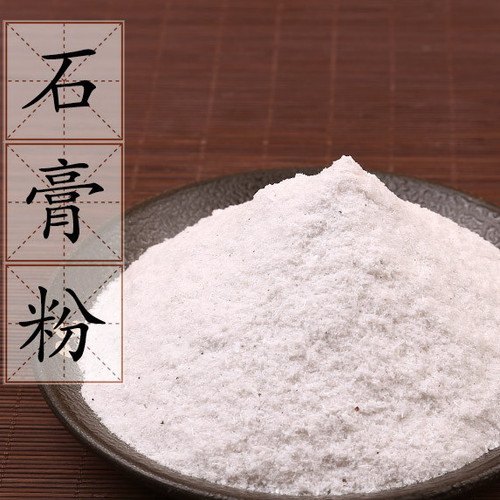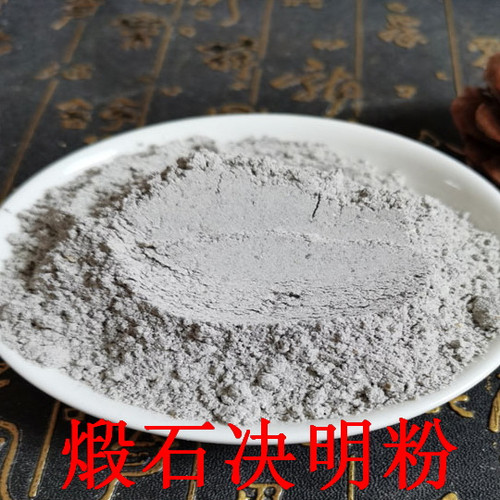Product Overview
Parts used: The mineral itself
TCM category: Herbs that clear Heat and purge Fire and/or clear Summer Heat
TCM nature: Cold
TCM taste(s): Pungent Sweet
Meridian affinity: Stomach Lung
Scientific name: Sulfate mineral composed of calcium sulfate dihydrate, with the chemical formula CaSO4·2H2O
Use of gypsum (Shi Gao) in TCM
Please note that you should never self-prescribe TCM ingredients. A TCM ingredient is almost never eaten on its own but as part of a formula containing several ingredients that act together. Please consult a professional TCM practitionner, they will be best able to guide you.
Preparation: Boil alone before use, for up to 2 or 3 hours.
Dosage: 10 - 50 grams
Main actions according to TCM*: Clears Heat and drains Fire. Clears Lung Heat. Relieves thirst and restlessness. Clears Stomach Heat.
Primary conditions or symptoms for which gypsum may be prescribed by TCM doctors*: Fever Dry mouth Asthma Coughing Headache Toothache Phlegm Gingivitis
Contraindications*: Because this is a heavy substance, do not use for those with a weak Stomach or without true Heat.
Common TCM formulas in which gypsum are used*:
For fevers with thirst and irritability combine gypsum with lophatherum herbs (Dan Zhu Ye) and anemarrhena rhizomes (Zhi Mu).
For feverish diseases with symptoms of thirst and irritability combine gypsum with common reed rhizomes (Lu Gen), dwarf lilyturf roots (Mai Dong) and snake gourds (Gua Lou).
For Heat in the Stomach and Heart with painful obstruction of the throat, sores in the tongue, mouth and throat combine gypsum with woad leaves (Da Qing Ye), woad roots (Ban Lan Gen), ningpo figwort roots (Xuan Shen), goldthread rhizomes (Huang Lian) and cape jasmine fruits (Zhi Zi).
For toothache combine gypsum with angelica roots (Bai Zhi) and bugbane rhizomes (Sheng Ma).
For diabetes combine gypsum with american ginseng (Xi Yang Shen), yam (Shan Yao), unprepared rehmannia (Di Huang) and anemarrhena rhizomes (Zhi Mu).
Key TCM concepts behind gypsum (Shi Gao)'s properties
In Traditional Chinese Medicine (TCM), gypsum are plants that belong to the 'Herbs that clear Heat and purge Fire and/or clear Summer Heat' category. Herbs in this category are used to clear inflammatory and infectious conditions, referred to as 'Internal Heat' in TCM. This is why most of the herbs in this category will have both antibacterial and antiviral properties. In TCM one has too much 'Heat' in their body as a result of a deficiency of 'Yin' (which is Cold in nature, see our explanation on Yin and Yang) or, more commonly, an excess of Yang (Hot in nature). Herbs that clear Heat and purge Fire treat the latter and as such tend to be Cold or Neutral in nature.
As suggested by its category gypsum are plants that are Cold in nature. This means that gypsum typically help people who have too much "heat" in their body. Balance between Yin and Yang is a key health concept in TCM. Those who have too much heat in their body are said to either have a Yang excess (because Yang is Hot in nature) or a Yin deficiency (Yin is Cold in Nature). Depending on your condition gypsum can help restore a harmonious balance between Yin and Yang.
Gypsum also taste Pungent and Sweet. The so-called "five elements" theory in Chinese Medicine states that the taste of TCM ingredients is a key determinant of their action in the body. Pungent ingredients like gypsum tend to promote the circulations of Qi and body fluids. That's why for instance someone tends to sweat a lot when they eat spicy/pungent food. On the other hand Sweet ingredients tend to slow down acute reactions and detoxify the body. They also have a tonic effect because they replenish Qi and Blood.
The tastes of ingredients in TCM also determine what organs and meridians they target. As such gypsum are thought to target the Stomach and the Lung. In TCM the Stomach is responsible for receiving and ripening ingested food and fluids. It is also tasked with descending the digested elements downwards to the Small Intestine. In addition to performing respiration, the Lungs are thought to be a key part of the production chain for Qi and the body fluids that nourish the body.






